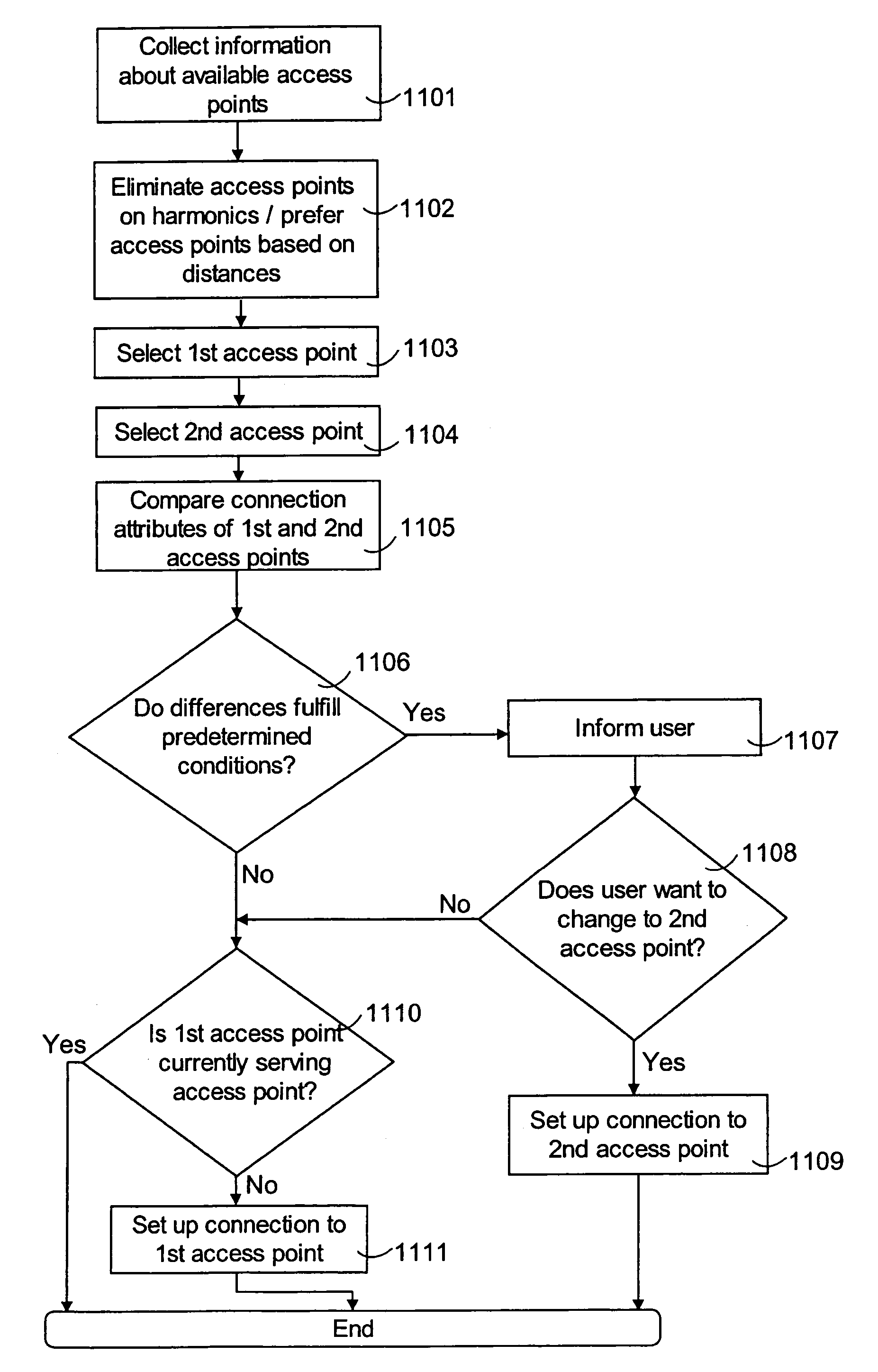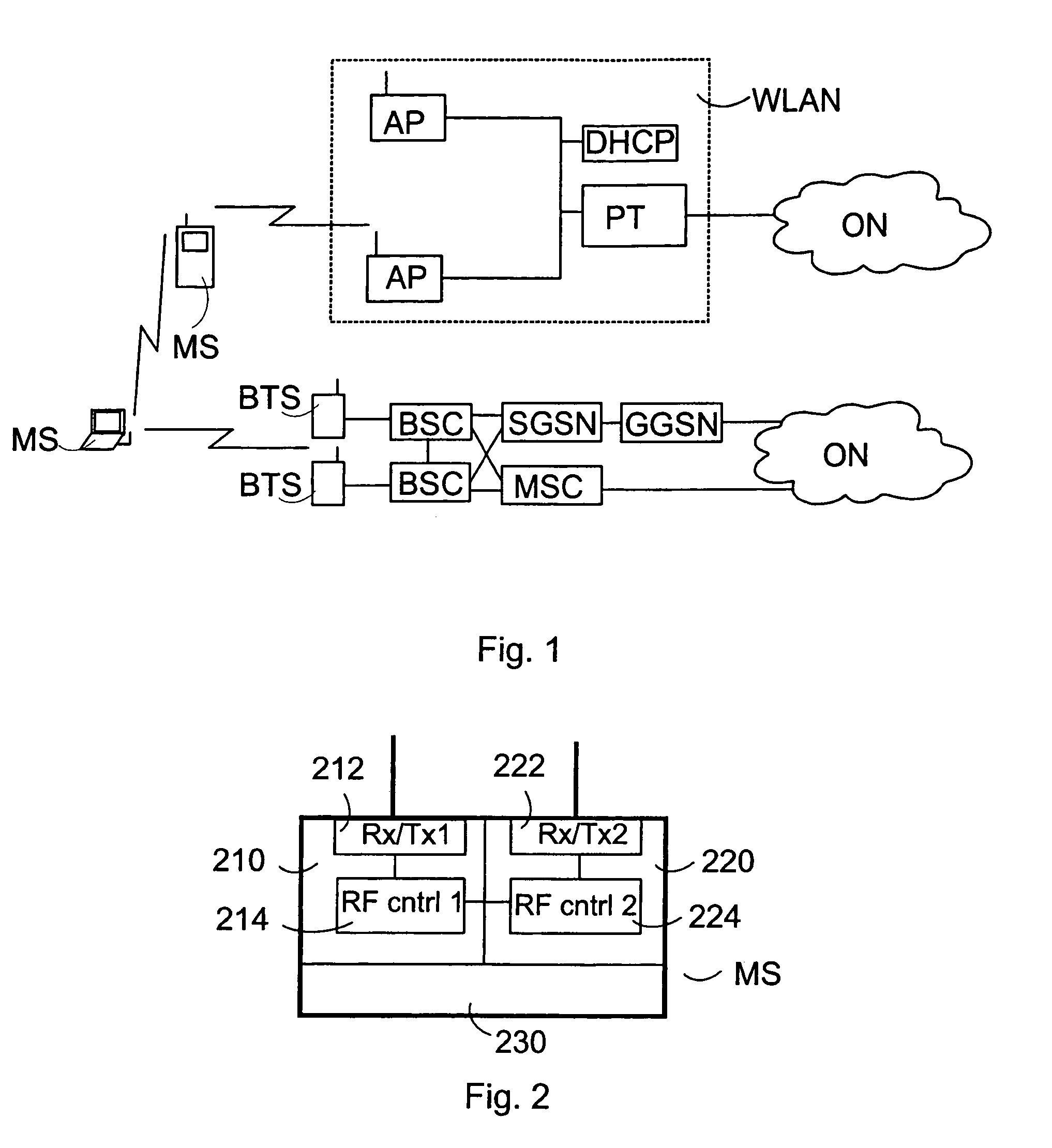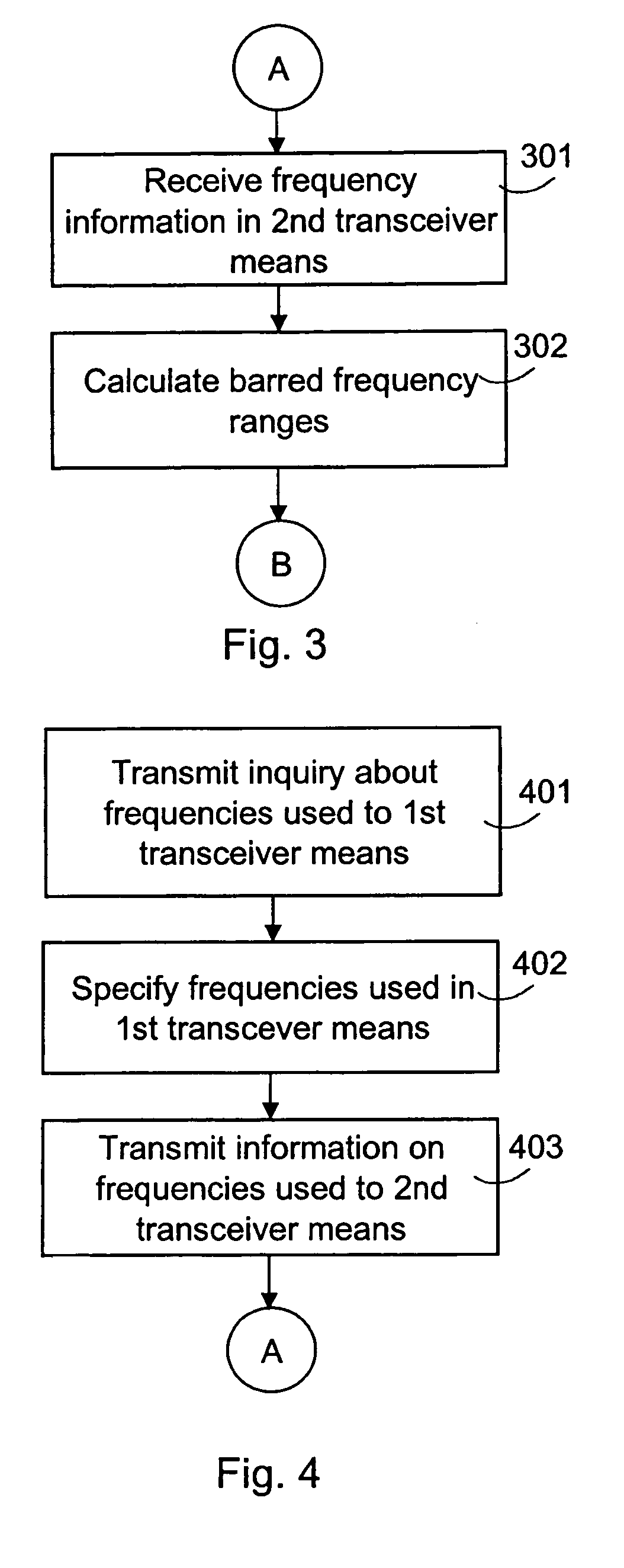Channel selection in wireless telecommunication system
a wireless telecommunication system and channel selection technology, applied in the field of channel selection in a telecommunication system, can solve the problems of weakening the performance of the receiver, affecting the operation of the receiver, so as to reduce the effect, prevent the selection of channels where harmonics reside, and reduce interference.
- Summary
- Abstract
- Description
- Claims
- Application Information
AI Technical Summary
Benefits of technology
Problems solved by technology
Method used
Image
Examples
Embodiment Construction
[0021]FIG. 1 shows a telecommunication system comprising a cellular network and a wireless local area network. The example in FIG. 1 is a wireless local area network WLAN and a mobile network according to the GSM / GPRS system (General Packet Radio Service), wherein at least the DCS 1800 frequency range can be used (uplink 1710-1785 MHz). The DCS 1800 frequency range causes harmonics in the range 5130-5355 MHz, i.e. in the frequency range 5150-5350 MHz generally allocated to the WLAN system. However, the solution of the invention is usable in any wireless networks in mobile stations capable of communication.
[0022]The wireless local area network WLAN comprises access devices called access points AP that offer radio access to a mobile station MS and thus terminate the broadband radio link. The access point AP manages the radio interface in accordance with the radio technology used, in accordance with the IEEE 802.11 standard in one preferred embodiment. A wireless network connection can...
PUM
 Login to View More
Login to View More Abstract
Description
Claims
Application Information
 Login to View More
Login to View More - R&D
- Intellectual Property
- Life Sciences
- Materials
- Tech Scout
- Unparalleled Data Quality
- Higher Quality Content
- 60% Fewer Hallucinations
Browse by: Latest US Patents, China's latest patents, Technical Efficacy Thesaurus, Application Domain, Technology Topic, Popular Technical Reports.
© 2025 PatSnap. All rights reserved.Legal|Privacy policy|Modern Slavery Act Transparency Statement|Sitemap|About US| Contact US: help@patsnap.com



